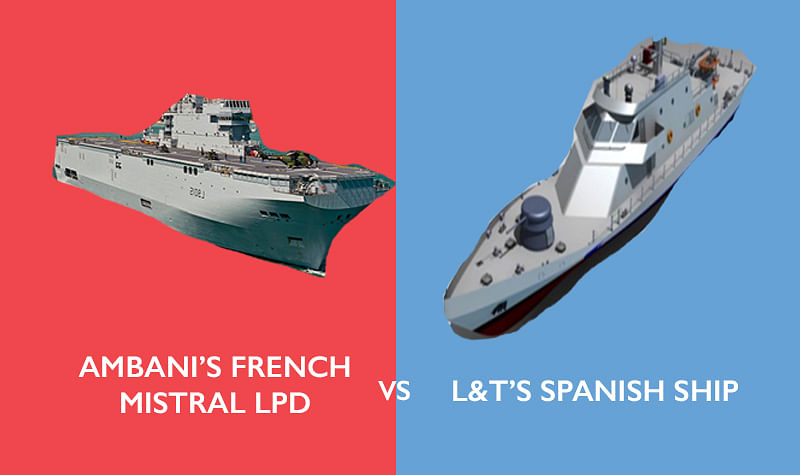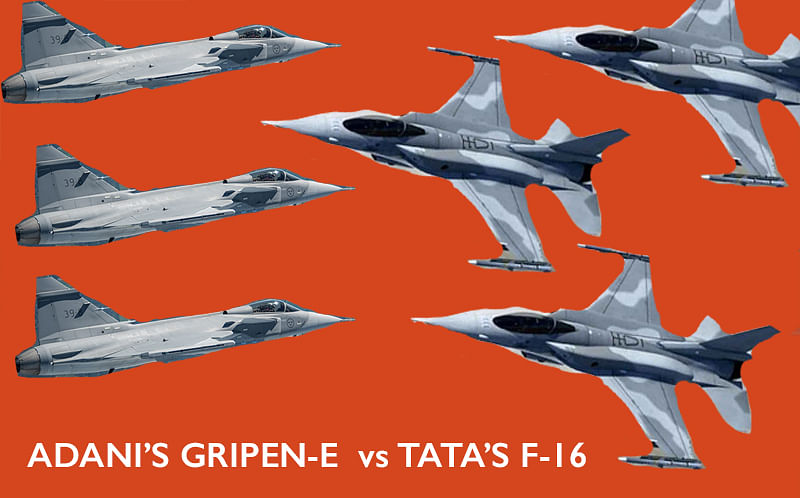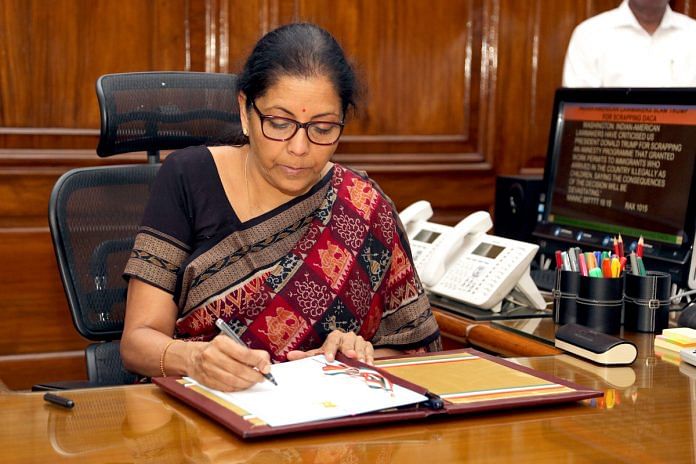New defence minister Nirmala Sitharaman to take crucial call on Rs 20,000 cr LPD contract; Adani vs Tata next
Taking over charge at the expansive South Block office, new defence minister Nirmala Sitharaman listed out defence modernisation, Make in India and “attending to long pending issues” in consultation with the cabinet as top priorities for her tenure.
The minister is expected to face two immediate challenges encompassing all these priorities that will put to test skills she picked up as commerce minister and pit India’s top four private sector defence firms against each other in a high stakes battle.
The first is a knotty affair that has brought Anil Ambani’s Reliance Defence against old hand Larsen & Toubro in a faceoff that is now in its final stage. At stake is a Rs 20,000 crore deal for new warships needed to transport soldiers and equipment for rapid deployment — a project that can turn the fortunes of the shipyard that bags it.
The second, which could be an even bigger challenge, is an upcoming contest for new fighter jets to be made in India. This project has brought new entrant Gautam Adani Group in a direct battle with established defence and aerospace player Tata for a deal worth over Rs 96,000 crore.
Although the contracts are at very different stages – the warship deal at the final phase and the fighter is just starting out – key decisions have to be made on both within the next few months.
A Landing Platform

While submarines and frigates make most of the headlines, the biggest Make in India project that the Navy is close to awarding to the private sector is for landing platform docks – large amphibious ships used to land troops and tanks onto a beach.
The project, initiated in 2013, has gone through a gut wrenching acquisition process and is now in the final stage with commercial bids to be opened within the next few weeks. The LPD order has been particularly tricky as two of the original shipyards bidding for it went bankrupt during the process. While one (ABG Shipyard) has not been able to recover, the other (Pipavav) was acquired by Reliance Defence and restructured.
Little had moved on the project for the last two years after multiple objections were raised by the finance wing of the defence ministry on the financial ability of the Ambani-acquired yard to handle a project of this magnitude. At least two rounds of financial scrutiny have been carried out by the ministry and a decision was taken in March this year to go ahead with the opening of bids.
At present, the all important benchmarking process is on – in which the navy scrutinises recent global deals to come up with a price range within which it expects the commercial bids to fall.
Fireworks are expected after the commercial bids are opened – both Reliance and L&T are expected to fight hard to prove that their bid is the lowest. Unlike a traditional purchase in which a hard cost is obtained from the vendor, a make in India project like this has several factors that shift responsibility of calculating the “actual cost” to the defence ministry.
Single Engine Power

The other project that is likely to roll out within the next few weeks is for new single engine fighters – the Air Force wants to procure 18 aircraft directly from a foreign vendor while 96 more are to be made with the Indian partner.
While tenders for the contest are likely to be sent out shortly, it has already become a two cornered fight between an Adani-Saab consortium and a Tata-Lockheed Martin grouping. There are only two single engine fighters available, with the Swedish Gripen tying up with Adani and the American F-16s going with the Tata Group.
The high stakes contest come with diplomatic complications – both Indian business houses wield considerable clout and Washington has been keen for a model partnership on joint defence manufacturing for its F-16 jets.
The challenge will be to ensure that the selection process is smooth. As per the government’s strategic partnership policy, Indian companies to be selected for this mega project should have both financial strength and proven technical capability.
While Tata qualifies easily on both counts, the Adani group has no experience at all in the aerospace and defence sector. A way can be found around this by the Adani group by acquiring smaller companies with past experience but its qualification as a strategic partner is likely to be hotly contested by other competitors, including the Mahindra Group.
Sitharaman will soon be meeting officials and going through the increasing pile of complicated procurement files in the defence ministry that will require deft handling and navigating particularly tricky waters.




Personally would prefer L&T and Tatas. These two should get the deal.